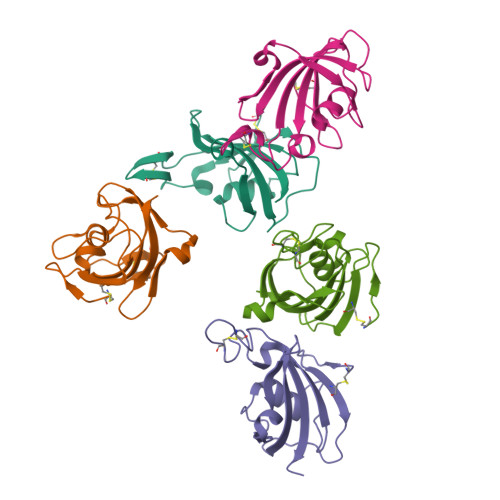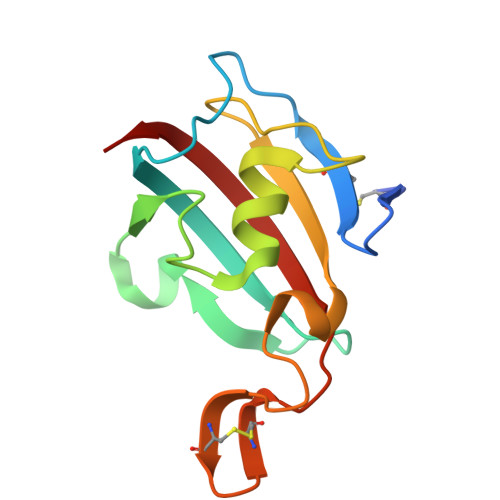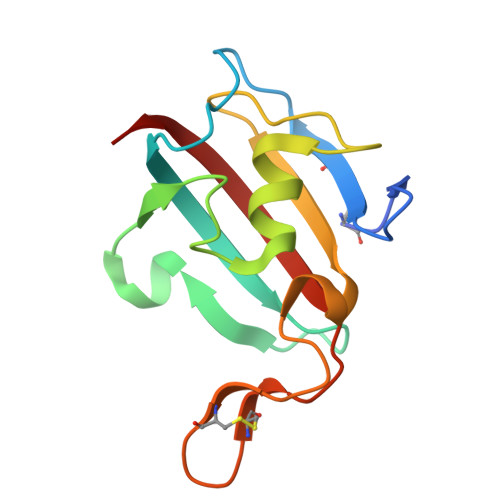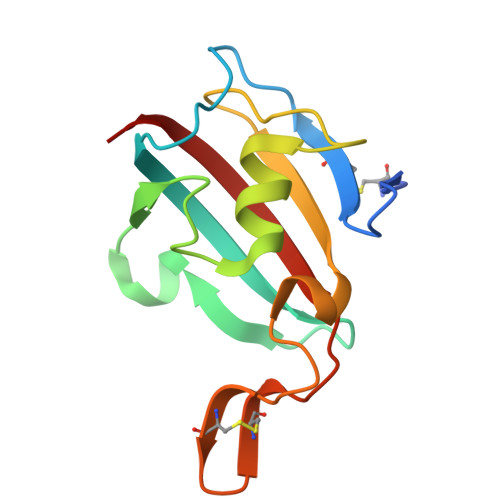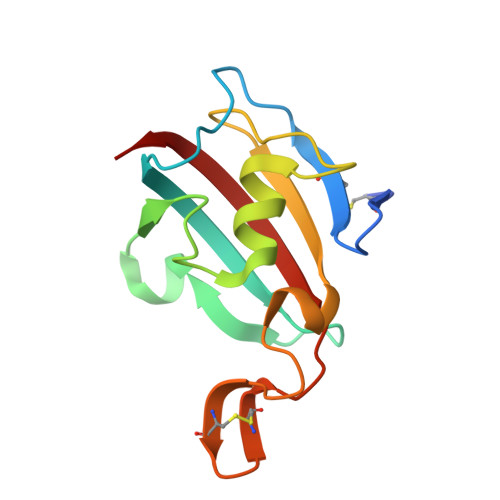Structural analysis uncovers a role for redox in regulating FKBP13, an immunophilin of the chloroplast thylakoid lumen
Gopalan, G., He, Z., Balmer, Y., Romano, P., Gupta, R., Buchanan, B.B., Swaminathan, K., Luan, S.(2004) Proc Natl Acad Sci U S A 101: 13945-13950
- PubMed: 15356344
- DOI: https://doi.org/10.1073/pnas.0405240101
- Primary Citation of Related Structures:
1U79 - PubMed Abstract:
Change in redox status has long been known to link light to the posttranslational regulation of chloroplast enzymes. So far, studies have been conducted primarily with thioredoxin-linked members of the stroma that function in a broad array of biosynthetic and degradatory processes. Consequently, little is known about the role of redox in regulating the growing number of enzymes found to occur in the lumen, the site of oxygen evolution in thylakoid membranes. To help fill this gap, we have studied AtFKBP13, an FKBP-type immunophilin earlier shown to interact with a redox-active protein of the lumen, and found the enzyme to contain a pair of disulfide bonds in x-ray structural studies. These disulfides, which in protein mutagenesis experiments were shown to be essential for the associated peptidyl-prolyl isomerase activity, are unique to chloroplast FKBPs and are absent in animal and yeast counterparts. Both disulfide bonds were redox-active and were reduced by thioredoxin from either chloroplast or bacterial sources in a reaction that led to loss of enzyme activity. The results suggest a previously unrecognized paradigm for redox regulation in chloroplasts in which activation by light is achieved in concert with oxygen evolution by the oxidation of sulfhydryl groups (conversion of SH to S-S). Such a mechanism, occurring in the thylakoid lumen, is in direct contrast to regulation of enzymes in the stroma, where reduction of disulfides targeted by thioredoxin (S-S converted to SH) leads to an increase in activity in the light.
Organizational Affiliation:
Department of Biological Sciences, National University of Singapore, Singapore 119260.








